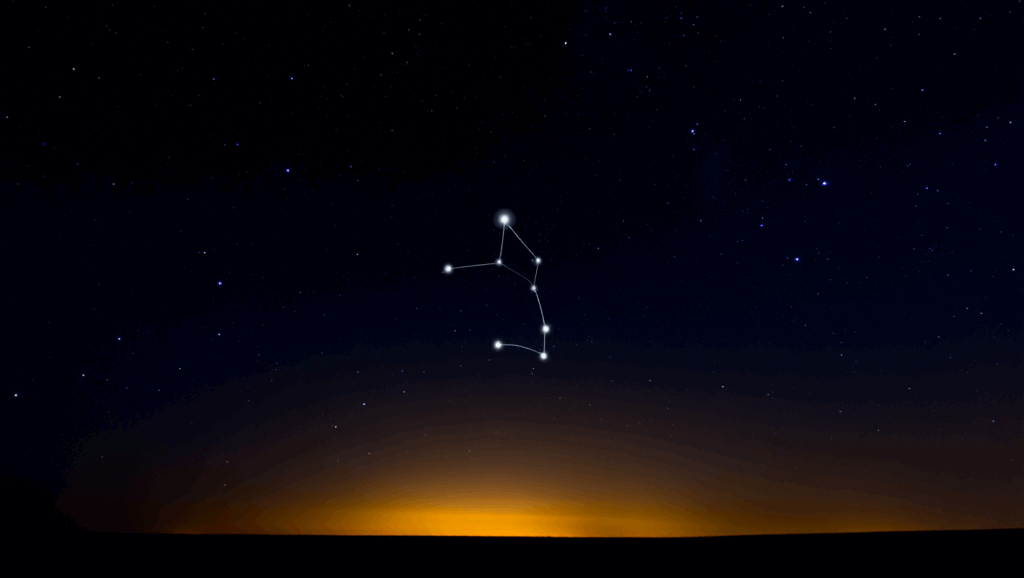Have you ever stopped to really look up at the sky? Most people walk by without noticing the incredible show happening right above their heads.
Learning to spot things in the sky opens up a whole new world of wonder. From bright planets to strange cloud formations, there’s always something interesting to see.
Whether someone wants to impress friends or just satisfy their curiosity, knowing what’s up there makes every day more exciting.
The sky offers free entertainment and education. No special equipment neededjust eyes and a little knowledge.
Why Spotting Things in the Sky is Mesmerizing?
Looking up teaches people about the world around them. The sky acts like a giant classroom where anyone can learn about weather, space, and natural patterns.
When someone spots a bright star or unusual cloud, they’re connecting with the same universe that has surprised humans for thousands of years.
Sky-watching sparks curiosity in both kids and adults. A child might ask why the moon changes shape. An adult might wonder about that red dot near the horizon.
These questions lead to learning about astronomy, meteorology, and physics without feeling like homework.
The best part? Every person can do it. No age limits, no special skills required. Just step outside and look up.
Fun and Interesting Things in the Sky to Spot
Ready to put your new knowledge to work? Here are incredible things in the sky that anyone can spot with just their eyes and a little patience.
Celestial Wonders
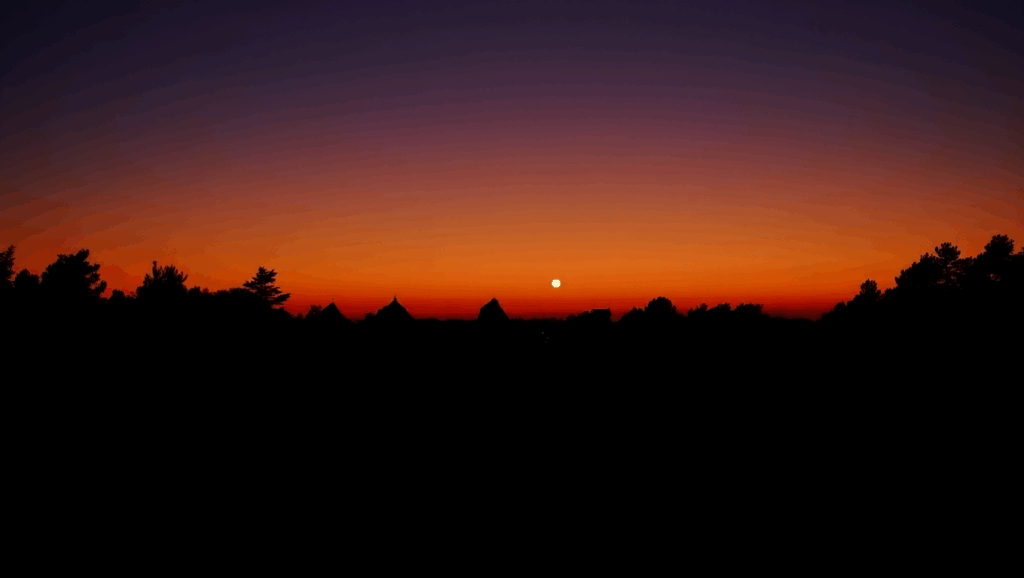
Space objects put on the best shows in the sky. These cosmic performers have been dazzling humans for thousands of years, and they’re still stealing the spotlight tonight.
1. Venus (The Morning/Evening Star)
Venus shines brighter than any star in the sky. This planet appears as a brilliant white dot that doesn’t twinkle like real stars do.
- Best time: Just after sunset or before sunrise
- Fun fact: Venus is hot enough to melt lead on its surface
- Where to look: Low on the horizon, east or west
2. Jupiter
The largest planet in our solar system looks like a steady, bright, cream-colored star. With binoculars, people can even spot its four largest moons.
- Best time: Late evening when it’s highest in the sky
- Fun fact: Jupiter is so big that over 1,000 Earths could fit inside it
- Where to look: High in the southern sky (varies by season)
3. Meteor Showers
These “shooting stars” streak across the sky in brilliant flashes. The Perseids in August and the Geminids in December put on the best shows.
- Best time: After midnight, during peak shower dates
- Fun fact: Most meteors are smaller than a grain of rice
- Where to look: Dark areas away from city lights
4. The Big Dipper
This star pattern looks like a giant ladle in the sky. It’s part of a larger constellation and helps people find other stars.
- Best time: All year round in the northern areas
- Fun fact: The handle stars point toward Polaris, the North Star
- Where to look: Northern sky, rotates around Polaris
5. Saturn and Its Rings
Saturn appears as a yellow-white dot, and with a telescope, its iconic rings become visible.
- Best time: Summer and fall evenings when Saturn is closest to Earth
- Fun fact: Saturn’s rings are made mostly of ice
- Where to look: Southeastern sky, rising in the late evening
6. The Moon (Especially Full or Supermoons)
Our closest celestial neighbor changes shape through its phases and steals the show during full moons or rare supermoons.
- Best time: Full Moon nights or during moonrise
- Fun fact: A supermoon can appear 14% larger and 30% brighter
- Where to look: East at moonrise, high in the sky at midnight
7. Orion’s Belt
A row of three bright stars that looks like a belt in the sky. Part of the Orion constellation, it’s easy to spot.
- Best time: Winter evenings in the Northern Hemisphere
- Fun fact: These stars are all supergiants, much bigger than our sun
- Where to look: Southeast sky in the evening
8. Mars (The Red Planet)
Mars glows with a reddish hue and appears to move slowly against the starry background.
- Best time: Every 26 months when it’s closest to Earth
- Fun fact: Mars appears red due to iron oxide (rust) on its surface
- Where to look: East in the late evening, varies seasonally
9. The Milky Way Galaxy
A thick band of stars and cosmic dust stretches across the sky, best seen in dark, rural areas.
- Best time: Summer nights during new moon phases
- Fun fact: You’re looking at the edge of our galaxy from the inside
- Where to look: Overhead, spanning from horizon to horizon
10. A Total Lunar Eclipse
During this dramatic event, Earth casts a shadow that turns the Moon a deep red, often called a “Blood Moon.”
- Best time: During scheduled lunar eclipses (usually 1–2 times per year)
- Fun fact: The red color comes from sunlight bending through Earth’s atmosphere
- Where to look: In the eastern or western sky, depending on the timing of the eclipse
Weather Phenomena
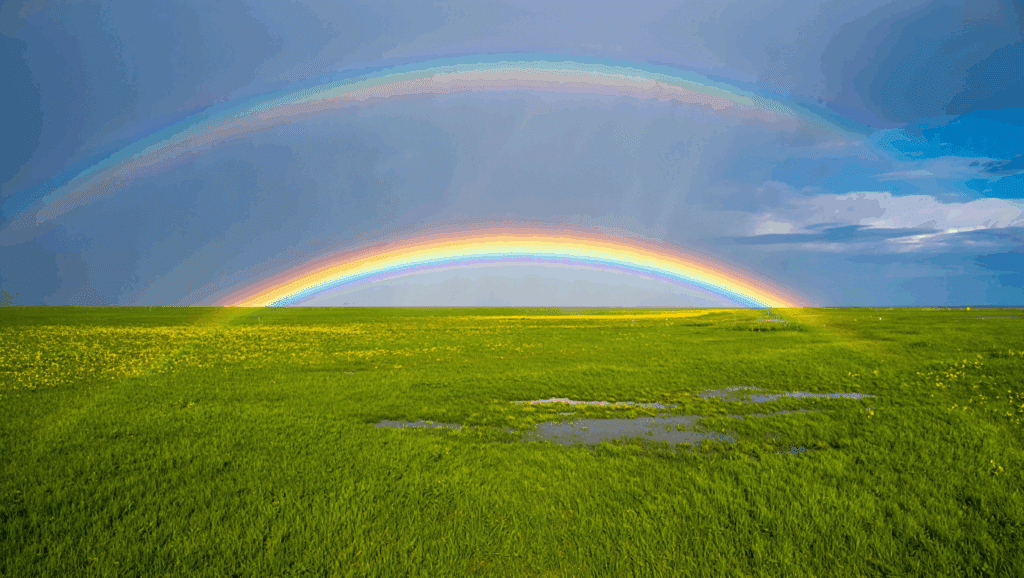
Mother Nature creates her own light shows right in Earth’s atmosphere. These weather events can be just as exciting as any star or planet, and they happen much closer to home.
11. Sun Halos
These glowing circles form around the sun when sunlight passes through ice crystals in thin, high-altitude clouds.
- Best time: On cold, sunny days with cirrostratus clouds
- Fun fact: A 22° halo is the most common type and forms a perfect ring
- Where to look: Directly around the sun (wear sunglasses and never stare directly at it)
12. Fire Rainbows (Circumhorizontal Arcs)
A rare and colorful phenomenon where light refracts through ice crystals, creating a rainbow-like band in the sky.
- Best time: Summer afternoons when the sun is high
- Fun fact: They only occur when the sun is at least 58° above the horizon
- Where to look: Below cirrus clouds, often parallel to the horizon
13. Lenticular Clouds
These lens-shaped clouds often resemble flying saucers and form over mountain ranges or hilly terrain.
- Best time: Windy days near the mountains
- Fun fact: Their UFO-like shape has led to many alien sighting claims
- Where to look: Near mountaintops or ridges in windy weather
14. Noctilucent Clouds
Glowing, wispy clouds that shine after sunset are formed by ice crystals high in the atmosphere.
- Best time: Summer twilight in high latitudes
- Fun fact: They’re the highest clouds on Earth, over 50 miles up
- Where to look: Low on the horizon, just after sunset
15. Fogbows
Like rainbows, but white and ghostly, fogbows form when sunlight interacts with tiny water droplets in fog.
- Best time: Early mornings in foggy areas
- Fun fact: Fogbows are broader than rainbows and don’t show bright colors
- Where to look: In the direction opposite the sun when fog is clearing
16. Hailstorms
Ice balls fall from the sky when strong storm updrafts freeze water droplets and toss them into the air.
- Best time: During spring and summer thunderstorms
- Fun fact: Hailstones can reach speeds over 100 mph
- Where to look: Beneath towering cumulonimbus clouds
17. Ball Lightning
A mysterious and rare weather phenomenon in which a glowing sphere of electricity floats and hovers briefly.
- Best time: During or just after thunderstorms (extremely rare)
- Fun fact: Scientists still aren’t sure exactly how it forms
- Where to look: Near ground level or around stormy skies
18. Shelf Clouds
These dramatic, low-hanging clouds look like rolling waves or wedges and often mark the edge of a thunderstorm.
- Best time: Before a heavy storm hits
- Fun fact: They can stretch across the entire horizon
- Where to look: Approaching from the direction of incoming storms
19. Virga
Streaks of precipitation that fall from clouds but evaporate before reaching the ground, creating a curtain-like appearance.
- Best time: Dry, hot days with scattered storms
- Fun fact: Virga can cause sudden wind shifts on the ground
- Where to look: Under rain clouds, where streaks disappear mid-air
20. Heat Lightning
Lightning seen from distant storms with no audible thunder—it lights up the horizon in flashes.
- Best time: Hot summer nights
- Fun fact: The thunder is too far away to hear, even though lightning is visible
- Where to look: Low on the horizon, away from the storm
21. Ice Crystals (Diamond Dust)
Tiny ice particles sparkle in the air, usually during freezing temperatures when the air is calm and moist.
- Best time: Cold, clear mornings in Arctic or mountain regions
- Fun fact: They can create sun pillars or glittering halos
- Where to look: Floating in the air, usually close to the ground
Artificial Sky Phenomena
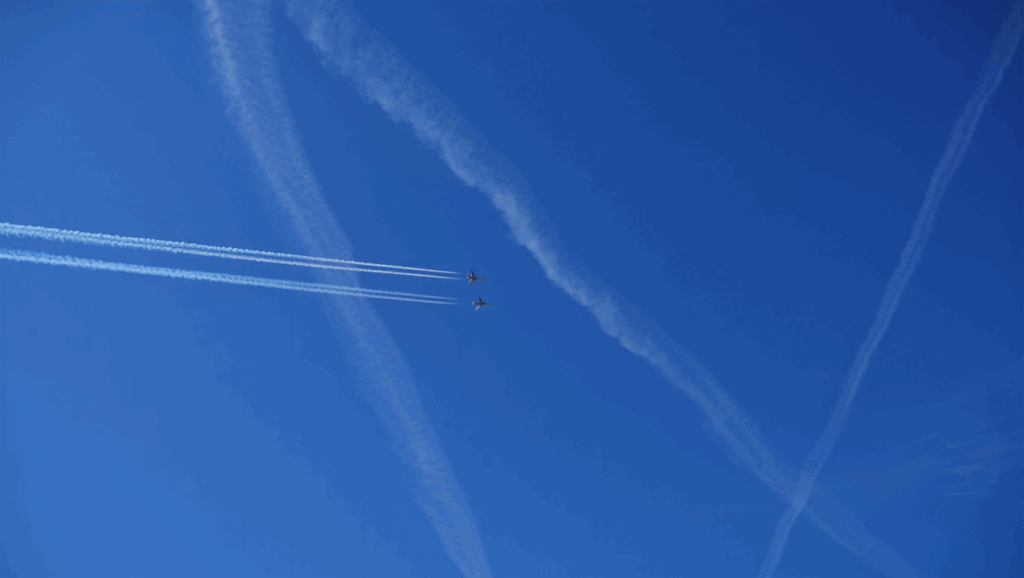
Humans have added their own objects to the sky show. These man-made visitors might not be natural, but they’re still interesting to spot and track across the heavens.
22. Drones
These small flying machines zip through the sky with blinking lights and buzzing motors.
- Best time: Evenings or during events and shows
- Fun fact: Drones are used for deliveries, filming, and even light displays
- Where to look: Parks, stadiums, or neighborhoods, often flying low
23. Weather Balloons
Launched for scientific purposes, these large balloons rise high into the atmosphere carrying instruments.
- Best time: Early morning launches from weather stations
- Fun fact: They can reach altitudes of over 100,000 feet before bursting
- Where to look: Rising straight up in clear morning skies
24. Skywriting Planes
Special planes spray messages or symbols in the sky using smoke trails.
- Best time: During events, fairs, or advertising campaigns
- Fun fact: The smoke is made of paraffin oil vapor
- Where to look: Above large public gatherings or urban areas
25. Military Jets and Flyovers
Fast and loud, these aircraft streak across the sky during exercises, ceremonies, or national holidays.
- Best time: Scheduled airshows or patriotic celebrations
- Fun fact: They can travel at supersonic speeds
- Where to look: Over stadiums, bases, or cities during special events
26. Starlink Satellites (Satellite Trains)
These chains of satellites look like glowing dots moving in a straight line across the night sky.
- Best time: Right after launch or before sunrise
- Fun fact: They are part of SpaceX’s plan to provide global internet
- Where to look: Use satellite tracker apps to catch their flyby
27. Fireworks
Exploding colors and patterns light up the sky during festivals, holidays, and celebrations.
- Best time: Nighttime events like New Year’s Eve or the Fourth of July
- Fun fact: The colors come from burning different metal salts
- Where to look: Above cities, parks, or concert venues
28. Blimps and Airships
Large floating airships advertise brands or cover sporting events from above.
- Best time: Daytime during major sports or promotional events
- Fun fact: They fly slower than cars—often under 70 km/h
- Where to look: Hovering above stadiums or city centers
29. Paragliders and Hang Gliders
Thrill ride air currents using open canopies or rigid wings, often in scenic or hilly areas.
- Best time: Midday to late afternoon when thermals are strongest
- Fun fact: Paragliders can stay aloft for hours and travel over 100 km
- Where to look: Near cliffs, hills, or designated flying zones
30. Rocket Launches
These spectacular events send spacecraft roaring into space, trailing flames and vapor clouds.
- Best time: During scheduled launches (day or night)
- Fun fact: The rocket’s exhaust can create strange glowing shapes in the upper atmosphere
- Where to look: East coast of the U.S., Kazakhstan, or other launch sites
31. Sky Lanterns
Paper lanterns lit by flame float gently into the night sky during festivals and weddings.
- Best time: During cultural or religious celebrations at night
- Fun fact: They originated in ancient China as military signals
- Where to look: Rising slowly in groups during night events
32. Tethered Advertising Balloons
These large helium-filled shapes are anchored to the ground and float high to catch attention.
- Best time: Daytime during store openings or product promotions
- Fun fact: Some are shaped like characters, animals, or logos
- Where to look: Above malls, car lots, or event spaces
33. Drone Light Shows
Coordinated swarms of drones form patterns, animations, and messages using colorful lights.
- Best time: Nighttime at tech events, concerts, or holidays
- Fun fact: A single show can use over 1,000 drones in perfect sync
- Where to look: Above large outdoor events or city skylines
Flying Creatures
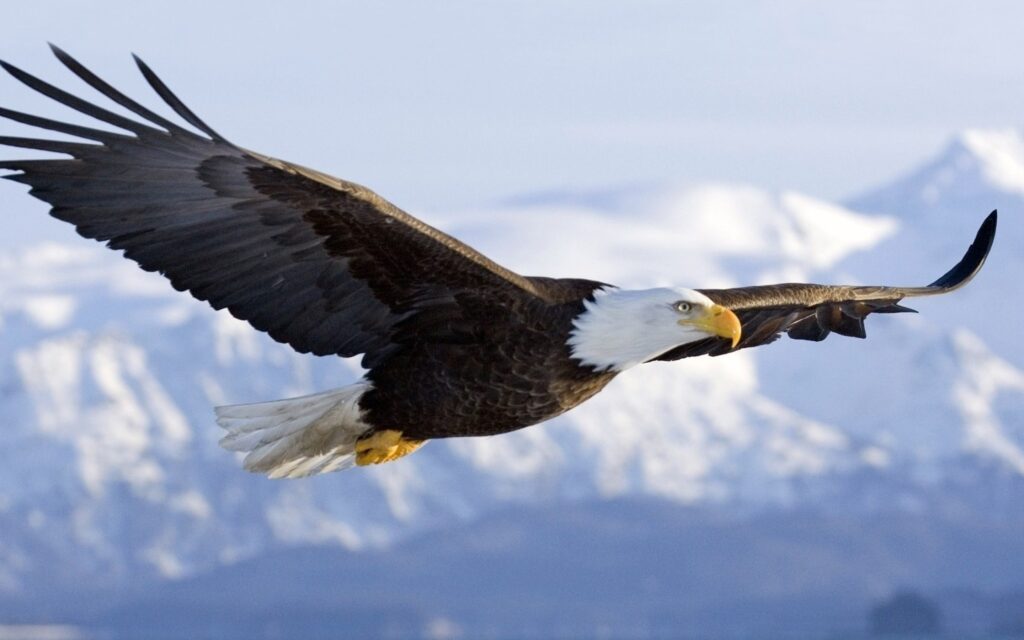
From soaring eagles to fluttering butterflies, the sky is alive with incredible creatures that flap, glide, and dance through the air, each playing a unique role in nature’s grand performance.
34. Bald Eagle
A symbol of strength and freedom, the bald eagle soars with broad wings and sharp eyesight.
- Best time: Early morning or late afternoon
- Fun fact: They can spot fish from over a mile away
- Where to look: Near lakes, rivers, and coastlines in North America
35. Monarch Butterfly
These graceful orange-and-black butterflies travel thousands of miles during migration.
- Best time: Spring and fall migration seasons
- Fun fact: Monarchs migrate over 2,000 miles to Mexico
- Where to look: Flowering fields, gardens, and forests
36. Vulture
Though not always beloved, vultures are essential sky cleaners and amazing gliders.
- Best time: Midday when thermals are strongest
- Fun fact: They rarely flap their wing;s they soar effortlessly for hours
- Where to look: Skies above open land, deserts, or mountains
37. Fruit Bat (Flying Fox)
These gentle, winged mammals are essential pollinators in tropical regions.
- Best time: Dusk and night
- Fun fact: They have excellent eyesight and use it instead of echolocation
- Where to look: Forests or fruit trees in Africa, Asia, or Australia
38. Owl
Masters of silent flight, owls hunt at night using powerful vision and stealth.
- Best time: After dark or at dusk
- Fun fact: Some owls can rotate their heads 270 degrees
- Where to look: Forest edges, barns, or tall trees
39. Dragonfly
Fast and agile, dragonflies zoom across ponds and meadows chasing mosquitoes.
- Best time: Warm afternoons near water
- Fun fact: They can fly forward, backward, and even hover like helicopters
- Where to look: Near lakes, wetlands, and streams
Conclusion
The sky offers a free show every single day. From bright planets to strange clouds, there are countless things in the sky waiting to be spotted. Anyone can start this hobby right now, no expensive equipment needed.
The best part? The sky never stays the same. Tonight’s sunset will be different from tomorrow’s. Next week might bring a meteor shower. Each season shows new stars and weather patterns.
So grab those apps, step outside, and look up. The universe is putting on a performance just for you. Start with one thing, maybe Venus or a rainbow, and let your curiosity grow from there.
Start your sky-watching story today!


